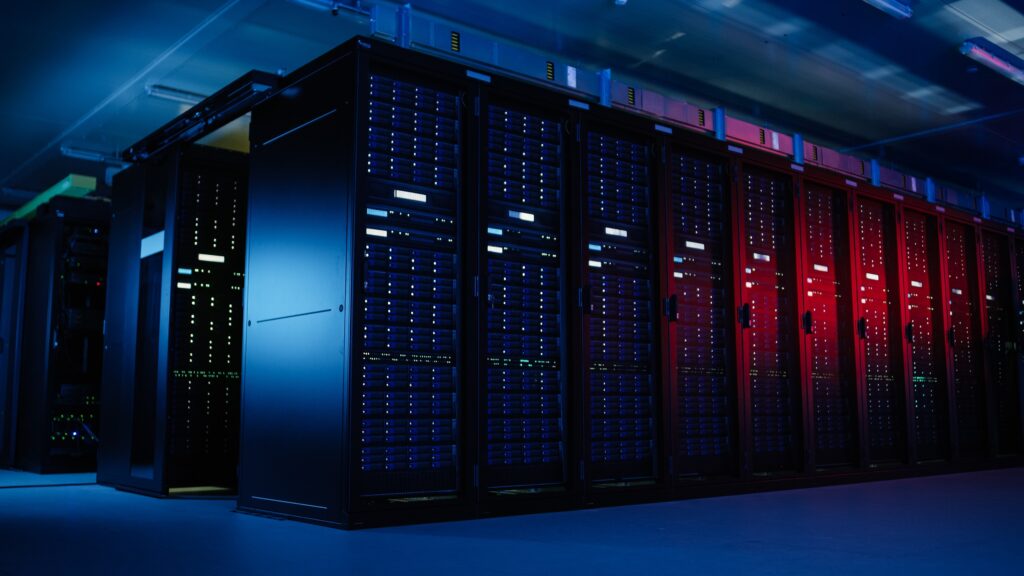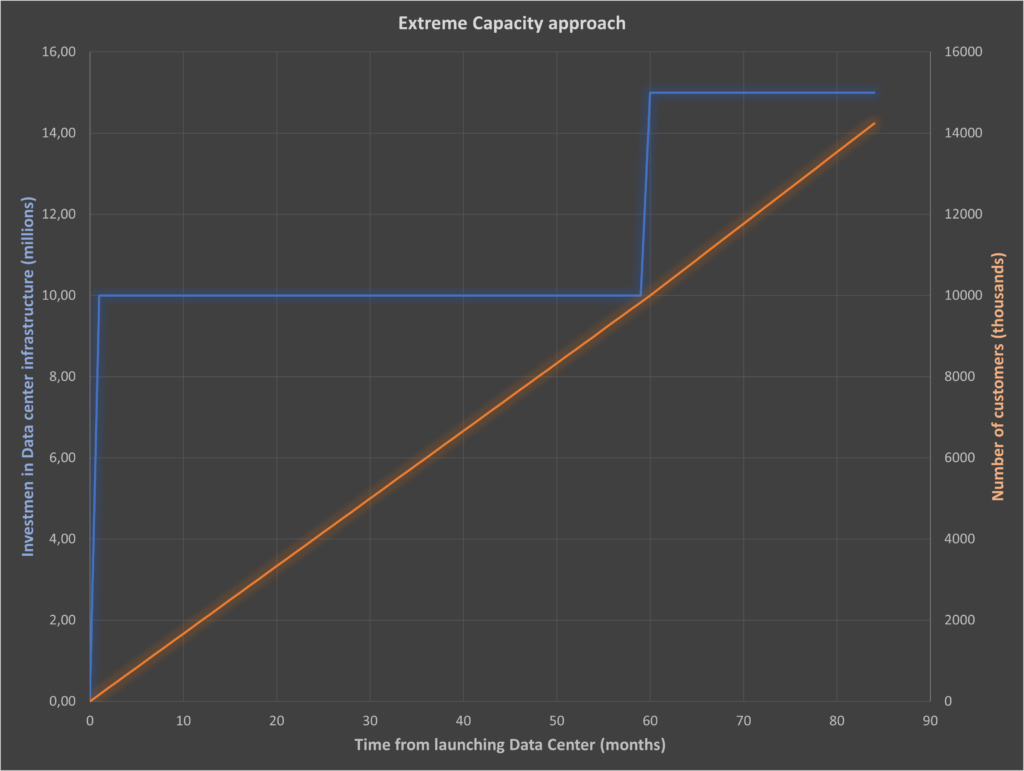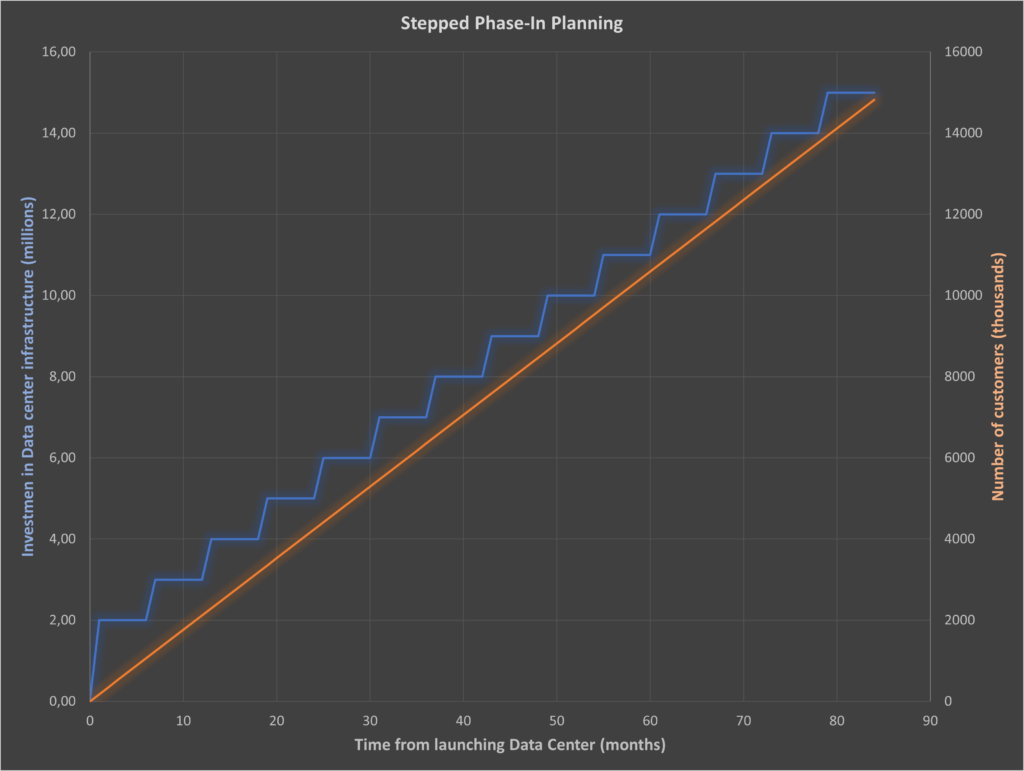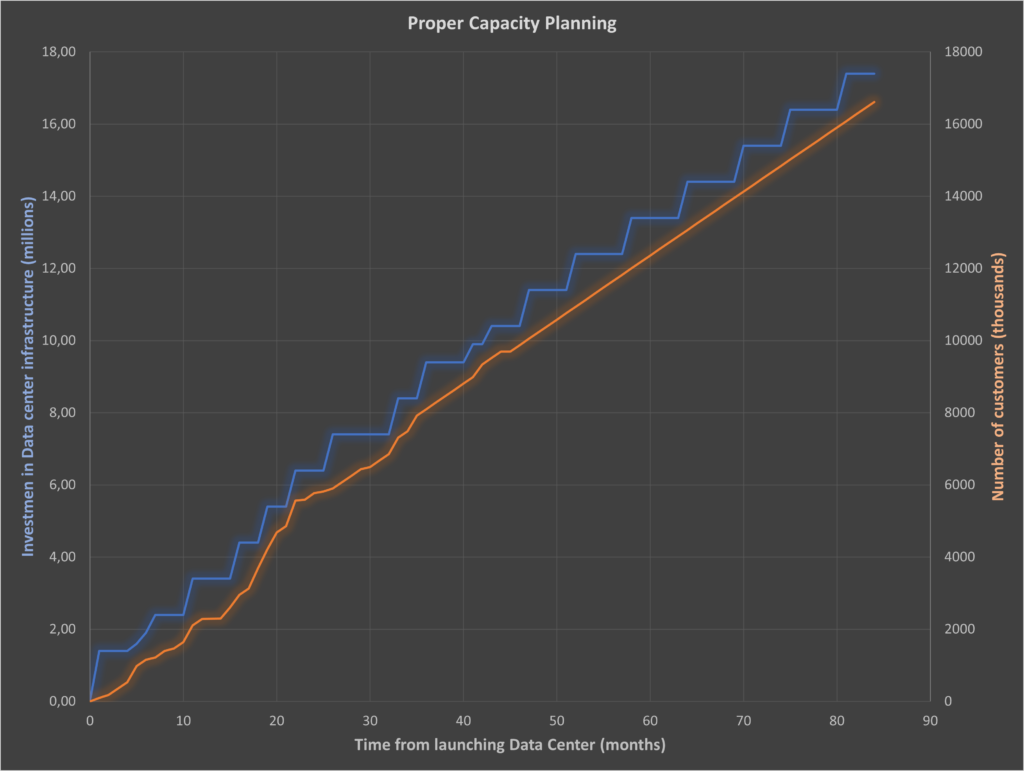Capacity planning starts with data center planning
It’s a fact that capacity management hasn’t inherently changed over the past 20 years. Because what more do you need than floor space, electricity, security, and formulas to calculate consumption and infrastructure needs? However, what has changed are the modern challenges that data center providers are facing today. As data center growth is exploding, a classic adage applies: plan the work, then work the plan.
Yet the last two decades have seen many continue to adhere to classic capacity management strategies and in turn struggle with floods of challenges that they didn’t plan for.
But the truth of the matter is that capacity planning must start when building a data center. When capacity planning is genuinely being executed, then proper documentation of data center inventory is automatically present. If it’s not done at the start, then there’s more work to get inventory in line. Proper inventory is a necessary component to effectively plan future capacity needs, but we’ll get to that in a bit.
When it comes to building data centers, the latest trend is putting them as close as physically possible to customers. This introduces challenges for planning due to limited resources, especially when it comes to space. And of course, capacity planning is all about managing your infrastructure in the right way.
On the other hand, long-term capacity planning is the old-school best practice that contradicts the new trend. Planning five or ten years ahead simply becomes impossible.
So what’s the solution then? To answer that question, let’s look at the following examples of capacity planning methodology.
The graph below demonstrates an “Extreme Capacity” approach where a huge up-front investment is made. This model is based upon the projection that there is continuous growth of customers in the long term.
However, there are several potential pitfalls that can make plans go the wrong way. You simply can’t estimate the exact rate at which new customers are being onboarded, or even worse, how many new kW of power and cooling consumption are entering the data center. Then there’s the investment that’s there in vain as it’s not going to be immediately utilized. Not to mention maintenance and support costs that are being charged for no obvious reason. So this example has an obvious flaw: there is no mitigation of capacity investment cost before the capacity itself can be utilized.
An optimum approach is to add capacity in smaller steps when it’s needed – a so-called “Stepped Phase-In Planning”. The figure below depicts this approach. With this approach, up-front investment is reduced as well as maintenance and support costs.
However, this approach must be executed carefully in order to avoid any drawbacks. For instance, the decision to increase power and cooling capacity should only happen when a threshold has been reached. Even in this case there’s a downside, the time needed to acquire and install additional capacity may result in a lack of new customers and lost revenue.
Therefore, this approach is optimal only when capacity planning is based on forecasted requirements. However, to have the proper forecasting, one must rely on historic actual measurements rather than boilerplate data and also employ proper analytic methodology.
The figure below depicts the situation where proper capacity planning based on metered data is being executed.
Importance of what-if scenarios
It’s clear that proper capacity planning comes from accumulated metered power, cooling, space usage, and other data combined with precise analytical methods. However, one must account for possible abnormalities (deviations from short-term plans). These abnormalities are caused by signing contracts with large and super-large customers but also outside agents such as natural disasters, pandemics, etc.
All these events cause disruption of the planning process, and the possibility of such “irregular” events must be taken into account. The way to do this is to conduct what-if analysis for different reasonable scenarios.
What-if scenario execution does not mean one shall install extra capacity. It only means that plans are made that will be executed if and when needed.
Real experiences from the field when managing an expanding data center
Imagine a data center that’s in the planning stage or one already built but growing fast while lacking a defined capacity management plan. It’s definitely a balancing act to grow while minimizing capacity investments and fulfilling clients’ needs without going into a “red zone” where availability exceeds the actual need. Let’s look at a few examples:
Example 1: A company designed their data center with a limit of 20 MW, and they know that it can be upgraded to 30 MW. But this isn’t capacity planning. In this case, the company has invested in the initial 20 MW and has planned just one upgrade, instead of multiple small steps. Huge jumps in increasing capacity can be financially overwhelming.
Example 2: When the number of customers outpaces capacity, data centers or data center providers can all of a sudden have monumental expenses which they have to scramble to finance. This type of reactive approach is dangerous and can be likened to firefighting. Clients may experience unreliable service during the time it takes to ramp capacity up.
Example 3: A Capacity Planning Manager needs to be connected and in touch with individuals from key departments in a company such as sales, IT, and the board, because everyone plays a part and has important knowledge to contribute when it comes to data center growth and the company’s growth. If the board decides that in one month the data center will be offering a new service, and the DCIM planner isn’t aware of this, the outcome can be less than ideal as they can’t properly plan capacity.
Know your demand, customers, and services – modern data center capacity planning challenges
In today’s digital age, data centers are facing unprecedented challenges as the world has never been so volatile. They need to follow and adjust quickly to the needs of the masses: their ever-increasing appetite and ever-decreasing patience for immediate access to hot topics or the next best thing. But how? First things first, limits are set at the beginning when planning a data center. After that, it’s all about knowing and predicting the demand.
Yet, there’s the unknown future that can bring ANYTHING, so get creative and start thinking about everything that could affect your clients and their services. Since you can’t simply look into a crystal ball to know what the future holds, here are some topics to consider before building a data center and to include in a capacity management plan:
- What are your clients’ niches? Are they telcos, enterprises, security, etc.?
- What’s going to be the next trend where it concerns the media and entertainment industry? Where are the music and film industries headed? Does this affect your customers’ services?
- What’s happening in the transportation industry? What changes will be taking place and how will this affect the services your clients will seek?
- Is a war possible in the next 3, 5, 10, or even 20 years?
- Are your clients in areas where mother nature wreaks havoc? Can natural disasters appear out of nowhere and how might they affect service needs?
- What are predictions for another pandemic?
- How about the costs of utilities – water, electricity, gas – what are the experts forecasting?
Some of these questions might seem unrealistic, yet data centers have to be ready to respond to these types of challenges. If the above issues aren’t addressed before building a data center, or included in plans for those that are already operating, it’s going to be hard to optimally capitalize on the investment. Ideally, a plan should include many smaller steps and be analyzed and implemented continuously, rather than long pauses between analysis and large jumps in upgrades.
Best Practices for Better Data Center Capacity Planning
If you’re building a new data center, things you need to consider right from the start include:
- Determine what types of customers will you have and what services you are also going to offer them. From there you can take steps to grow slowly but surely because big increases are painful for everyone.
- Decide what DCIM and monitoring software to use. By using software from the very beginning you set yourself up for success. Historical data is your greatest ally.
- Decide how far out you’re going to plan. We recommend a plan for every year for up to 3 years, with tweaks being done at 6-month intervals or more frequently.
If you’re already operating a data center:
- Inventory has to be brought up to ground zero, which means that everything is documented. Only then can true capacity management planning start because now data can be collected for analysis and forecasting. Note the process of getting inventory in line and collecting data can take up to two years, dependent upon the data center’s size. This also includes implementing proper change management processes that must affect the documentation.
In both cases, always plan for the worst. Inflation. Mother nature. Wars. Famine. Disease. Capacity management never ends, it is a continuous project, present every day.
DCIM tools that lighten the workload and strengthen capacity planning management
From the above discussion, it’s evident that without precise and clear data capacity planning is tough work, no doubt about it. The good news is that other engineers have met these problems before and have created great software tools called Data Center Infrastructure Management (DCIM).
DCIM must be both a documentation and planning tool that executes planning by combining historic data and trend inputs provided by data center planners (the business).
Be aware that your change management processes, regardless of how perfect they are, will produce deviation in the documentation. Additionally, there are automatic discovery tools that will discover the actual inventory of active components and the discovered data can be reconciled with the inventory data and DCIM. Inventory data quality is thus improved.
There are many examples of these tools and their application. Some of their use cases are well described on this website, check them out:

Manage power and cooling growth in your data center efficiently





